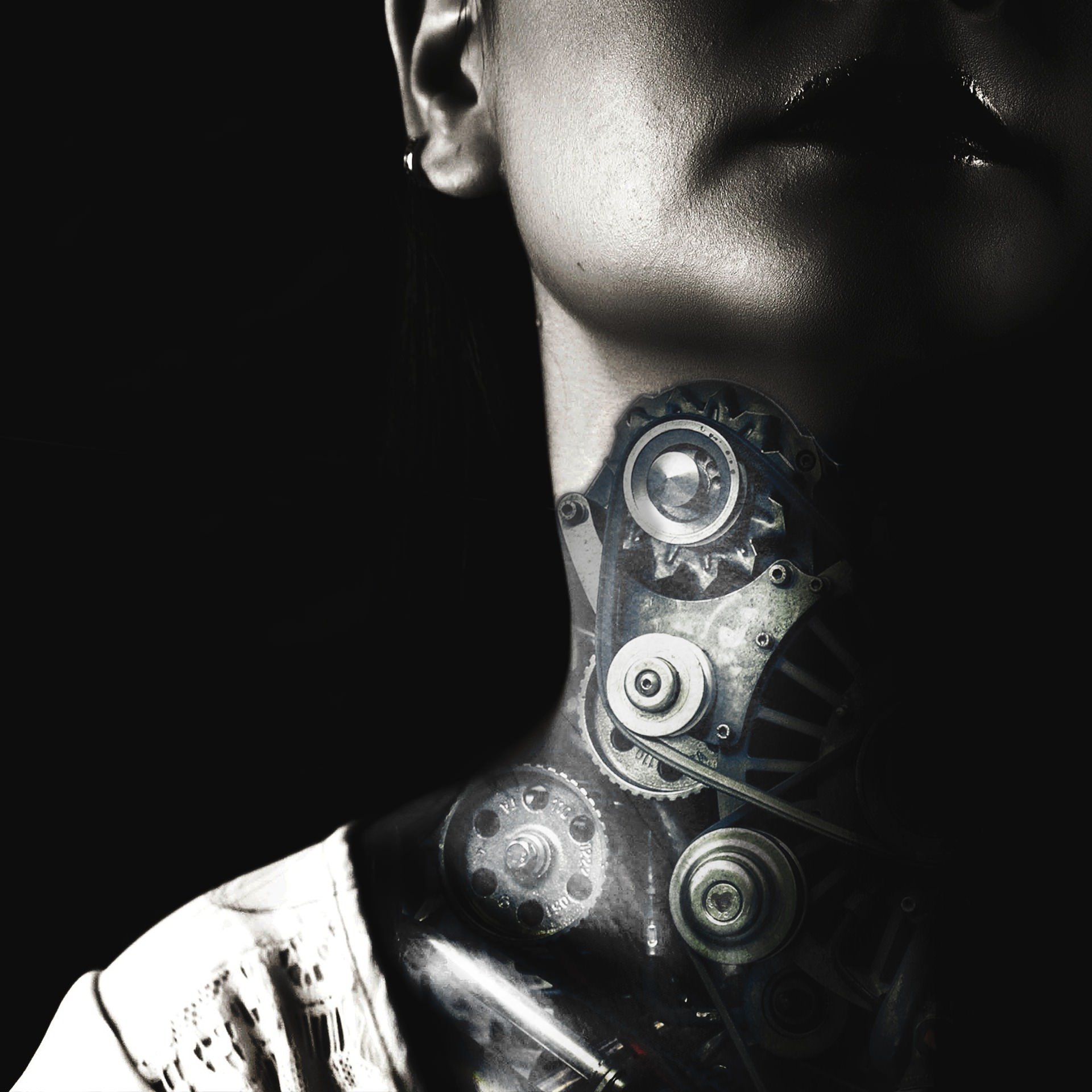
Disclaimer:
Cryptogee never ACTUALLY said anything about wanting an AI girlfriend.
I'm just suspicious. :)

This article started as a comment to an article by @cryptogee who, incidentally, has written some of the best articles I've yet to read on Steemit. As it was getting ridiculously long, I decided to make it into a full-fledged post.
In order to understand what this article is about, however, you'll need to first read his article and then come back.
Cryptogee and I have had some great exchanges over the past few days respecting strong-AI and I believe to get the full effect, you should read those first. If you don't have the time or inclination, then skip to the fourth one, the prompt for this article.
Fourth post/comment (the prompt for this article).

My friend, you scare me.
You want to sanctity the life of sentient AI beings? Yikes. That strikes me as being analogous to banning antibiotics ... because the bugs have a right to live too! Some things in life come down to It's Us or Them. To my mind, both Typhoid and strong-AI fit the bill.
Irrespective of your views on the advisability of creating machines that can think, here's an interesting point to ponder: Could it be that, irrespective of computing power, sentience simply isn't possible in a non-biological entity?
Science is all but certain that consciousness is an emergent property. Nothing about the multitude of electro-chemical synapses created by our physical brains can explain our minds.
How are all those millions of synaptic firings that occur each second, in vastly different parts of our brains, combining into one cohesive sense of consciousness? No one knows. And, it's not for lack of trying.
They even call this conundrum, the hard problem of consciousness (not very creative, but that's what they call it).
We do know, with a high degree of certainty, that what makes it into our conscious thoughts, derives from the neurons that are firing at Gamma Hz (approximately 50 firings per second). Neurons firing at lower rates remain unconscious.
But that leads to the binding problem. How is the information from all those disparate Gamma neurons binding together into one cohesive conscious experience? We do know that there is not a central consciousness hub collecting all this data and spitting it out as a whole.
There is an intriguing theory (by one of the world's most prominent physicists, Roger Penrose, and anesthesiologist Stuart Hameroff), called Orchestrated Objective Reduction (Orch OR), that posits that the interior of microtubules, which form the cytoskeleton of neurons, might be acting as sites of wave function collapse (quantum entanglement and superposition).
To quote Wikipedia:
Penrose determined wave function collapse was the only possible physical basis for a non-computable process. Dissatisfied with its randomness, Penrose proposed a new form of wave function collapse that occurred in isolation and called it objective reduction.
He suggested each quantum superposition has its own piece of spacetime curvature and that when these become separated by more than one Planck length they become unstable and collapse. Penrose suggested that objective reduction represented neither randomness nor algorithmic processing but instead a non-computable influence in spacetime geometry from which mathematical understanding and, by later extension, consciousness derived."
I know a fair amount about quantum physics but not enough to weigh-in on the merits of the Penrose/Hameroff theory. Other physicists have and the reaction has been mixed. Many dismissed the theory, arguing that our brains are too warm and wet for this to occur.
More recent research, however, suggests that what Penrose and Hameroff propose is in fact possible.
Orch OR was harshly criticized from its inception, as the brain was considered too "warm, wet, and noisy" for seemingly delicate quantum processes. However, evidence has now shown warm quantum coherence in plant photosynthesis, bird brain navigation, our sense of smell, and brain microtubules.
The recent discovery of warm temperature quantum vibrations in microtubules inside brain neurons by the research group led by Anirban Bandyopadhyay, PhD, at the National Institute of Material Sciences in Tsukuba, Japan (and now at MIT), corroborates the pair's theory and suggests that EEG rhythms also derive from deeper level microtubule vibrations.
In addition, work from the laboratory of Roderick G. Eckenhoff, MD, at the University of Pennsylvania, suggests that anesthesia, which selectively erases consciousness while sparing non-conscious brain activities, acts via microtubules in brain neurons.
If Penrose and Hameroff are right, then computer-based sentience, which would require consciousness, is not possible, irrespective of how much computing power you've got, because sentience is derived from quantum effects unrelated to computing.
And Cryptogee ... don't get mad at me just because I'm trying to kill off your fantasy girlfriend!:)
@old-guy-photos & @c0ff33a, I thought guys might be interested in this article.

Did you: Up-Vote? Follow? Comment?
Perhaps you haven't read, "Ancient The Curse," in my Intro Post.
Don't think you're safe just because you're not a whale.
Don't screw around with Black Magic!
Poetry can make wonderful gifts
Visit: QuillFire's Zazzle Store
